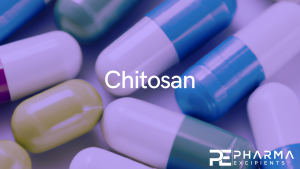Solid self-nanoemulsifying drug delivery systems of nimodipine: development and evaluation

Abstract
Background
This study aimed to formulate solid self-nanoemulsifying drug delivery systems (SNEDDS) for nimodipine (NIM). The selection of Cremophor RH 40, Lipoxol 300, and PEG 400 as oil, surfactant, and co-surfactant was based on solubility and self-emulsification assessments. A ternary phase diagram determined the optimal oil to Smix (surfactant/co-surfactant) ratio (40:60). By utilizing liquid SNEDDS (NIM-SNEDDS) as an adsorbate and chitosan EDTA microparticles, developed through spray drying (SD-CHEM) and solvent evaporation (SE-CHEM) as adsorbents, the solid SNEDDS were created (NIM-SD-SSNEDDS and NIM-SE-SSNEDDS, respectively).
Results
Both solid formulations exhibited favourable drug loading (NIM-SD-SSNEDDS = 79.67 ± 2.97%, NIM-SE-SSNEDDS = 77.76 ± 4.29%), excellent flowability, and drug amorphization as per XRD and DSC analysis. Scanning electron microscopy revealed smoothening and filling of adsorbent surfaces by adsorbate (with size range NIM-SD-SSNEDDS = 10–15 μm, NIM-SE-SSNEDDS = 20–25 μm). FTIR confirmed no interaction of drug and excipients. Stability studies demonstrated the physical and thermodynamic stability of reconstituted nanoemulsions with droplet size, PDI, zeta potential, emulsification time, % transmittance and cloud temperature for NIM-SD-SSNEDDS as 247.1 nm, PDI 0.620, 1.353 mV, 38–41 s, 94.64%, 54 °C and for NIM-SE-SSNEDDS as 399.6 nm, PDI 0.821, 1.351 mV, 40–48 s, 92.96%, 49 °C, respectively. FE-SEM images showed globules formed with small sizes, and there was no coalescence evidence, implying the reconstituted nanoemulsions’ stability. In vitro dissolution studies revealed a fourfold increase in drug dissolution for NIM-SD-SSNEDDS (84.43%) and NIM-SE-SSNEDDS (76.68%) compared to pure drug (28%). Ex vivo permeation studies indicated almost similar profiles for NIM-SD-SSNEDDS (22.61%) and NIM-SE-SSNEDDS (21.93%) compared to NIM-SNEDDS (25.02%).
Conclusion
NIM-SD-SSNEDDS exhibited superior performance compared to NIM-SE-SSNEDDS, highlighting the efficacy of microparticles developed by the spray drying method (SD-CHEM) as adsorbents for solidification. These results suggest enhanced dissolution and permeation for nimodipine in both the solid SNEDDS.
Download the full article as PDF here: Solid self-nanoemulsifying drug delivery systems of nimodipine
or read it here
Materials
Nimodipine was a gift sample from Strides Pharma Science limited (India). Cremophor® RH-40 (Polyoxyl 40 hydrogenated castor oil) was procured from Himedia (India). Lipoxol 300 (PEG 300) was procured from Sasol Chemicals (USA). Polyethylene glycol 400 (PEG 400) was obtained from TCI (India). Caprol® ET (hexaglycerol octasterate), Captex® 200 (propylene glycol dicaprylate), Captex® 300 (glyceryl tricaprylate/tricaprate) were gift samples from Abitech (USA). Labrafac™ PG (propylene glycol dicaprylocaprate) from Gattefossé (Canada) was received as a gift sample. Propylene glycol and Ethylene diamine tetra acetic acid disodium (EDTA disodium) were obtained from CDH (India). Chitosan with 90% deacetylation (DA) was acquired from Marine Hydrocolloids (India). Except for the ones we talked about, we used high-quality chemicals for the research. We used them just as they were, without any changes.
Kumar, M., Chawla, P.A., Faruk, A. et al. Solid self-nanoemulsifying drug delivery systems of nimodipine: development and evaluation. Futur J Pharm Sci 10, 87 (2024). https://doi.org/10.1186/s43094-024-00653-x
Read also our introduction article on Chitosan here:


